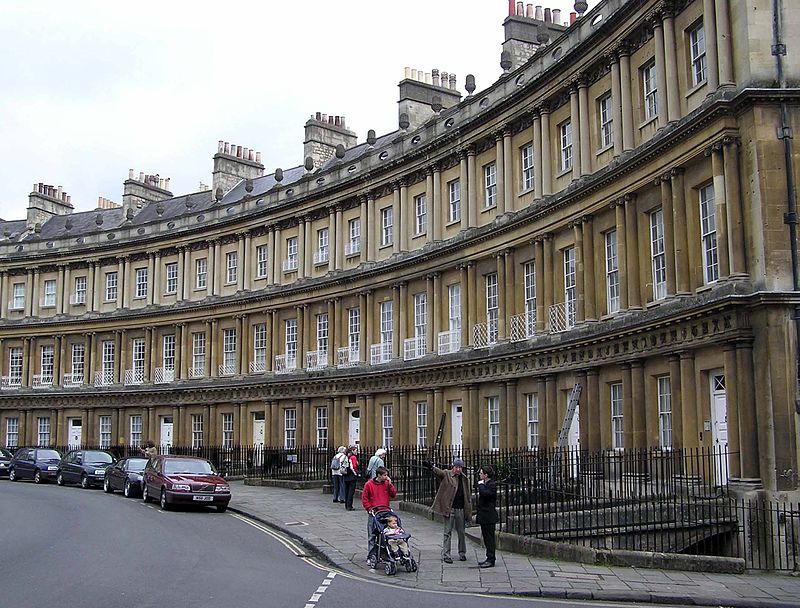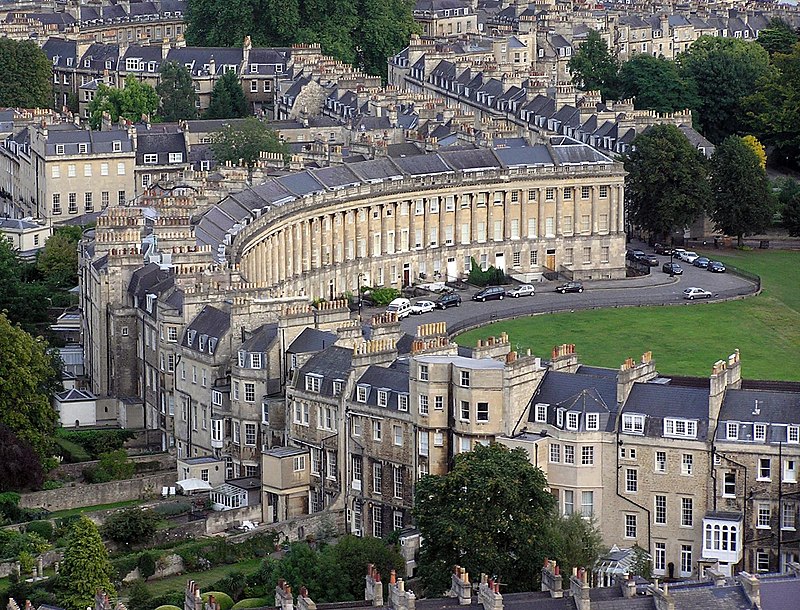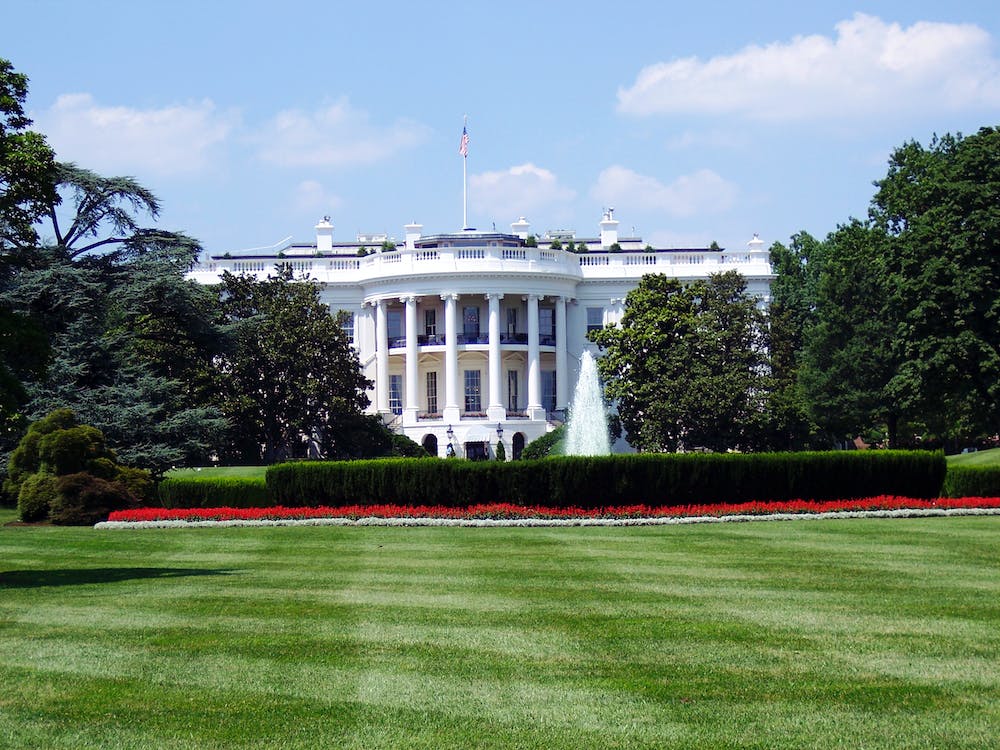When one thinks of Georgian architecture, images of grand, stately homes with symmetrical facades and elegant details often come to mind. Georgian buildings are not only beautiful, but also functional and reflect the values of the people who commissioned them.
The significance of Georgian architecture is demonstrated by the way it continues to influence modern architecture and design. Its refined and exquisite design represents the ideals and goals of the people who constructed and occupied these structures, evoking an era of creativity and innovation.
Let’s uncover the captivating allure and lasting impact of Georgian architecture – delve deeper into its elegant style and rich history.
Georgian Era
In the British history, the Georgian era (lasting from 1714 to 1830) was a time of big changes and improvements. The Georgian architectural design was introduced and the establishments of the Georgian period continued to be appreciated, with buildings featured prominently among Britain’s renowned landmarks.
Historical Context and Cultural Influences
The culture of Georgia was shaped by historical events and it being at the crossroads of Europe and Asia. The country’s central location on the Silk Road allowed for extensive cultural interchange with other civilizations, fusing together elements of Anatolian, European, Persian, Arabian, Ottoman, and Far Eastern cultures in a unique way.
The Georgian state underwent a Renaissance in the 11th and 12th centuries, which saw developments in the fields of philosophy, historical writing, theological writing, poetic writing, artistic creation, architectural design, astronomical study, and cartography.
Characteristics of Georgian Architecture
Elegance, refinement, and attention to detail are hallmarks of Georgian architecture. Such aspects shine through in the style’s symmetrical layouts, classical proportions, and ornate embellishments. Let’s explore the fundamental features that have made Georgian architecture so popular over the years:
Symmetry and Proportion
The facades of Georgian buildings are typically symmetrical, which is a defining feature of the style. Most buildings have a central entrance and have uniformly spaced windows on either side. The symmetrical design is characteristic of Georgian architecture and contributes towards the aesthetic quality of harmony and balance. The buildings’ height, width, and depth are all meticulously calculated to be in proportion to one another in order to create aesthetically beautiful structures.
Use of Classical Orders
The application of classical orders is a defining feature of Georgian architecture, which itself borrows substantially from the classical design. Georgian architecture frequently features columns in one of three primary classical orders—the Doric, Ionic, or Corinthian.
Generally, the columns are fluted, and their capitals are carefully crafted to match the proportions of the rest of the structure. Georgian buildings often have pediments, which are triangular or arched constructions located over the doorway.
Decorative Elements and Motifs
Georgian-style buildings feature classical columns, masonry figures, and classical elements such as pediments, columns and decorative moldings. Besides, they are also focused on ornate detailing on the skirting boards, dado rails, and doorcases. Ornamental moldings and pediments distinguish the outside, and paneled doors with elaborate carvings are a common feature. Georgian architecture is also characterized by its refined elegance and ornate details, such as the use of architrave on the doorposts that support the doors.
Other key characteristics of Georgian architecture include
- Structures with a brick or stone exterior
- Double- or triple-paned windows
- Balustrades and railings installed on balconies and steps, typically constructed of wrought iron.
- Windows and doors typically take the form of squares and rectangles since these shapes are simple and easy to work with.
Types of Georgian Architecture
Georgian architecture encompasses a wide range of styles, each of which was created to impress visitors and showcase the culture and ideals of the individuals who commissioned the structure’s construction.
Georgian Townhouses
Many Georgian townhouses were designed with a strict social order in mind. The upper classes lived in the grandest and most ornate homes, while the middle class and working class lived in modest buildings. The layout of the homes incorporated dedicated spaces for living, dining, and entertaining, making them both comfortable and stylish.
Examples: The Royal Crescent in Bath, Bedford Square in London, Lansdowne Crescent in Bath, Henrietta Street in Dublin, and Merrion Square in Dublin are some of the best known examples.
Georgian Churches
Georgian churches are easily recognizable by the tower or cupola that rises above the rest of the building’s exterior. The tower served as a place to keep bells and clocks and as a symbol of the church’s prominence in the community. Georgian churches are also notable for their use of huge windows to let natural light in. This is specifically done to ensure the buildings feel more open and airy on the inside.
Examples: The neoclassical St. Martin-in-the-Fields, the symmetrical and ornate Svetitskhoveli, Bolnisi Sioni, Gelati Monastery, and the magnificent and elegant Tbilisi Sioni Cathedral are just a few examples.
Georgian Public Buildings
Many public buildings constructed in the Georgian era were grand and impressive in appearance because of the importance of the institutions they housed. The architects ensured that the interiors were practical by including features like plenty of natural light and well-organized storage. Ornate plasterwork and other ornamental elements were also commonly used in the public spaces of many Georgian buildings, demonstrating the mastery of the builders and designers.
Examples: Georgian architecture can be seen at places like the stately Houghton Hall in Norfolk, Marble Hill in Twickenham and the Royal Scottish Academy in Edinburgh, Scotland.
Examples of Georgian Architecture
All of the structures listed below epitomize the distinctive beauty, grace, and practicality of Georgian architecture.
Royal Crescent in Bath, England
The Royal Crescent in Bath, England is an outstanding illustration of Georgian architecture due to its imposing symmetry, homogeneous facades of light Bath stone, and classical details like Ionic columns, pilasters, and pediments. The graceful curve of thirty Grade I Listed terrace houses, built between 1767 and 1775, overlooks Royal Victoria Park and has been home to many celebrities.
It is just one of many beautiful and functional features that help elevate this structure to the level of a Georgian architectural masterpiece. The Royal Crescent has been transformed into a variety of uses over the years, including a five-star hotel, a museum of Georgian life, and private residences. It is also a popular site for filming, including pieces like The Duchess (2008) and Persuasion (1816).
The White House in Washington, D.C.
The White House in Washington, D.C. is perhaps the most famous and recognizable example of Georgian architecture in the world. Designed by Irish American architect James Hoban, The White House was constructed in the Palladian style using sandstone imported from Virginia.
With its classical proportions, symmetrical facade, and ornate details, the White House is a grand example of the Georgian style and a testament to the architectural ingenuity of the era. It was originally called the “President’s Palace” on early maps. Eventually, the building officially became the Executive Mansion in 1810 before being given the name “White House” in 1901. Today, the White House remains the official residence and workplace of the President of the United States and is an iconic symbol of American democracy and power.
Blenheim Palace in Oxfordshire, England
Blenheim Palace in Oxfordshire, England was built in the early 18th century and was designed by playwright Sir John Vanbrugh. The palace was originally intended as a reward for the first Duke of Marlborough, John Churchill, for his victory over the French in the War of the Spanish Succession in 1704. This Palace is a grand example of a Georgian country house, featuring a classical facade, beautiful gardens, and sculptures.
It has a non-royal, non-episcopal building in England to hold the title of palace. Winston Churchill, the former Prime Minister of England, was born at Blenheim Palace. It was later designated as a cultural heritage site in 1988. The palace features impressive interior design, including the grand hall, saloon and green writing room.
Georgian Architecture in the Modern Day
In the 20th century, there was a revival of Georgian architecture that extended to The United States and The United Kingdom. This revival was characterized by the construction of new buildings designed in a Georgian style. Furthermore, there was renovation of existing Georgian buildings as well. The revival was driven by a renewed appreciation for the elegance and symmetry of Georgian architecture. Besides, there was a desire by the governments and cultural organizations to preserve the historical and cultural heritage of this important period. Even today, it still is among the Top 10 Most Used Architecture Styles in New York.
The influence of Georgian architecture can still be seen in contemporary design. Many architects and designers continue to incorporate Georgian features, such as sash windows, classical proportions, and ornate details, into their work. These features are often combined with modern materials and technologies to create a unique blend of tradition and innovation.
The preservation of Georgian architecture is of great importance in maintaining architectural heritage. Many Georgian buildings are cultural landmarks and serve as a testament to the values and aspirations of the people of this period. Many are now being revived under the Postmodern Architecture designs.
Delve into the architectural wonders of the Georgian period with our latest post, highlighting the best examples worldwide.
Conclusion
Georgian architecture is an integral part of the cultural heritage and identity of the past. It represents an era of elegance, refinement, and innovation. The main reason why it stands so significant is that it serves as a testament to the ingenuity and creativity of the human spirit.
Preserving Georgian buildings is crucial, not only for their association with significant historical events and individuals but also for their skilled craftsmanship and design that use high-quality materials.
Loved our journey through architectural history? Continue the adventure by comparing the distinct charms of Georgian and Victorian buildings.



